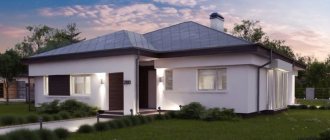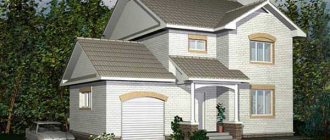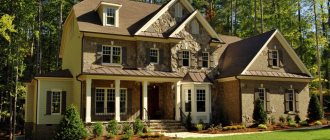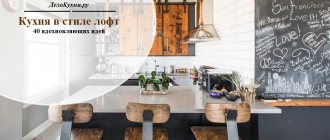Our first impression of a house is based on its appearance. Just as a person is greeted by his clothes, familiarization with a house begins from the façade. By its appearance, you can get an idea about the owner of this house, understand his preferences and tastes.
The classic facade of a house is simple, but tasteful.
In this article we will talk about what kinds of facades of houses in a classic style there are, but that will come a little later, but for now we will consider a number of practical functions of the facade:
- waterproofing (protects walls from penetration of precipitation);
- thermal insulation (protects the house from bad weather conditions);
- sound insulation (protects from street noise).
Decorating the exterior of your home is just as important as the interior furnishings. When designing facades, the following materials are used:
- plaster;
- facing ceramic stone;
- wooden lining;
- imitation timber;
- siding
- “wet” façade systems.
Every owner wants to give his home a representative appearance. First you need to decide on the style in which the facade will be designed.
General information
Functions
Now we will look at what types of room decoration there are in the classics, but first we propose to consider a number of practical functions:
Waterproofing (protecting walls from penetration of precipitation from the atmosphere).- Thermal insulation (protection from adverse weather conditions).
- Noise insulation (protection from noise on the street).
The finish of the exterior is just as important as the hardware inside. When decorating the walls, the following materials are used, namely:
- Plaster.
- Imitation of timber.
- Ceramic facing stone.
- Siding for the “wet” system.
- Wooden lining.
Every owner of his house/cottage wants to give his home a presentable appearance. But first you need to decide on the style in which the profile will be designed.
Materials
The use of natural materials is an essential feature of a true classic home. It can be stone or brick, timber or rounded log; spectacular metal elements are allowed.
Forged door linings, ornate fences and gates look great, gracefully complementing the building.
Styles
Traditional
Traditional styles include:
Modern.- Classical.
- Scandinavian.
- Manor Russian.
- Hack-tech.
- Mediterranean.
- Vanguard.
- Minimalism.
It’s not for nothing that these 8 styles are considered traditional, but there are more to them. Let's now look at the modern ones.
Modern
Recently, the facade of houses in a classical style has become increasingly in demand. Classicism, if you translate the word from Latin, means “exemplary”. If we are talking about street design, then it is stiffness, simplicity and laconicism. Such a building will look very solemn. In the modern world, the use of lightweight, but sufficiently reliable and strong materials makes it possible to reproduce the cladding of houses, without making them too heavy or overloaded. It is still possible to combine structures made of specially treated polyurethane and polystyrene.
At the same time, they will have the same delightful appearance as public buildings, which, as a rule, are made from natural materials. The result will retain its original appearance for a long time, since polyurethane copes excellently with adverse weather conditions, such as dampness, temperature changes, huge amounts of snow and other loads.
But the advantage can be considered that the cost will be much less than the purchase of materials of natural origin. Such options will be acceptable for both abandoned and residential buildings. Such buildings will fit perfectly into the architectural design, and will also attract attention and please the eye.
Classic
Classic-style facades, photos of which you will find in the article, have special decorative elements that are mandatory, for example:
Balustrades.- Columns.
- Various types of stucco.
Note! Refinement makes it possible to perfectly fit the architectural design of the building into any buildings and landscapes.
In such a room, only the rusticated corners of the building remain between the decorations in the form of decorative elements of the external decor. In turn, it will not be difficult to transform an ordinary “box” of a building into a cottage with a noble design using concrete decorative elements made to look like “white stone”.
You can also use:
- Balustrades.
- Cornices.
- "white stone" columns.
- Parapets.
- Bas-reliefs.
To decorate the buildings located on the site, you can even create a complete ensemble that will resemble the estates of the 18-19th century. You can also use decorative stone to decorate the pediment and plinth, the appearance of which will add monumentality and solidity. It will harmonize perfectly with the classics and look great on high plinths and walls.
Please note that if you want to complete all the work in such a way that it is of high quality and at the same time with your own hands, you need to study the instructions in detail or seek help from professionals.
If you like the French trend, then keep in mind that it is characterized by pomp, impressiveness, and artificial shine. But for the British trend, focus on the dryness that is inherent in the monotonous structure of the aristocracy in England.
Area in front of the house
It is performed in harmony with the exterior of the home. Decorative plants and seating areas should be elegant and discreet. Restraint of colors is also welcome.
Patio and garden
The plot of land behind the house should fit organically into the composition of the entire courtyard. Classic columns are also appropriate here. The color scheme is muted light tones. Coziness reigns here, in harmony with the main building, and not interrupting it with its excesses.
Pool
The shape of the artificial reservoir does not matter. The main thing is that it fits into the surrounding composition and is not too pretentious.
Fencing
A forged fence will give the house a noble and finished look. She looks strict, but at the same time luxurious and elegant.
Facade finishing
Balustrades and columns
In order to refine these elements, use:
Special plaster.- Gypsum.
- Tiled roofs.
- Marble.
Grilles, fences and balconies
To make such decorative parts, use the following raw materials:
- Cast iron.
- Iron.
Classics are relevant at all times, and most likely this is to some extent due to the constant belief that it will never go out of style. In confirmation, analytical studies have proven that 1/3 of the owners of country cottages and mansions made their choice in favor of... the unchanging classics. Finishing in this style helps demonstrate the subtlety of the owner's taste. This is of particular importance when it comes to people of high social status, since decorating the façade in a classical style tends to favor the very best examples of architectural history.
Most often, the preference of future owners for the classic style is revealed even at the stage of designing or selecting a building. But in some cases, architects have to transform nondescript rooms that were built several decades ago into classic ones, using beautiful stucco molding, mosaics and facade panels.
Engraving, forging and stucco are the most sought-after components in design elements to add sophistication to a home. This style is mainly liked by lovers of a huge number of decorative elements. Thanks to this choice, you will be able to display captured images from the mythology of certain representatives of flora and fauna, and in large quantities. For more detailed information, watch the video included in the article.
Features of a classic home interior
This style of interior design will be appreciated by serious people. It is also customary to use classic elements here: columns, statues, unique paintings, crystal. Solid wooden furniture and expensive fabrics will successfully complement the decor.
Materials
Modern arrangement allows the use of budget substitutes. However, true classics do not accept artificial materials that only from a distance resemble marble or wood. In this case, the entire composition will be disrupted.
For lovers of luxury and those who have the means, it is better to give preference to natural materials. Not only are they more environmentally friendly, but they also last much longer.
Color palette
She should be calm and discreet. The entire interior is done in pastel shades with the addition of dark noble accents (wood, stone, granite). Gilding may be present.
Furniture
If we talk about the classic style of the last century, then the furniture should be luxurious, decorated with patterns and monograms. Tables, chairs and sofas, made of expensive materials, should resemble the decoration of palaces of past centuries. They can be made of wood and decorated with satin, silk or velvet.
Decor and textiles
The choice of materials must be approached very carefully. You need to purchase only natural fabrics. Ideally suited to the interior: chintz, cotton, linen, satin, silk and velvet.
conclusions
To achieve the most positive effect - a comfortable and cozy atmosphere, use natural materials, harmonize color schemes and create the project correctly.
You can achieve a great look at your home, both externally and internally.
Bathroom
When designing a classic bathroom, you should adhere to the concept of comfortable luxury. It is better to decorate the walls in light colors. The tiles can be wood, marble or other natural stone.
The use of natural finishing materials will enhance the resemblance to royal interiors.
A marble sink and matching cabinet fronts, a bathtub with graceful claws and large mirrors will enhance the feeling of luxury.
If the dimensions of the toilet room allow, the bath can be located in the middle. It would be great if it was made of marble or other natural stone.
In small rooms it is installed against the wall.
Bedroom
The master bedroom should become a center of peace and tranquility.
Ideally, a bed with a high carved headboard, armchairs, a dressing table and a spacious wardrobe will be combined with the shade and texture of the curtains.
A chandelier with crystal pendants will decorate the ceiling of a classic interior, and sconces and bedside lamps will create muted, diffused light at the head of the bed.
Lighting
Good classics require good lighting. Natural light should pass freely through windows decorated with light curtains. The role of artificial lighting is played by the central chandelier, sconces and floor lamps.
The noble luxury of the chandelier is emphasized by a bronze or gilded base, a waterfall of crystal pendants, exquisite “candles”, glass or textile shades.
Smaller elements repeat the central lamp, creating accents in selected places: in seating areas, on paintings, near mirrors and the fireplace. Lamps must be placed completely symmetrically.
Ceiling
A characteristic feature of the classic style is the white ceiling. It can be decorated with plaster stucco and edged around the perimeter with a wide border.
In a fairly spacious room, decorators often use ceiling painting, or, in other words, decorating the ceiling surface with frescoes.
In modern classics, it is allowed to equip multi-level plasterboard ceilings with lighting.
Cabinet
Classics are great for creating a calm interior that puts you in a working mood. Cabinets in brown tones, from delicate cream to chocolate, look laconic. Dark furniture looks presentable; leather-look sofas look good.
You can choose a massive, stable table. Gilded figurines and high-quality stationery set will emphasize the business style of the office.
The room can accommodate shelves for stationery or an entire library, so shelving and glass cabinets would be appropriate here.
To decorate the office windows, use light curtains and heavy curtains to match the upholstered furniture.











